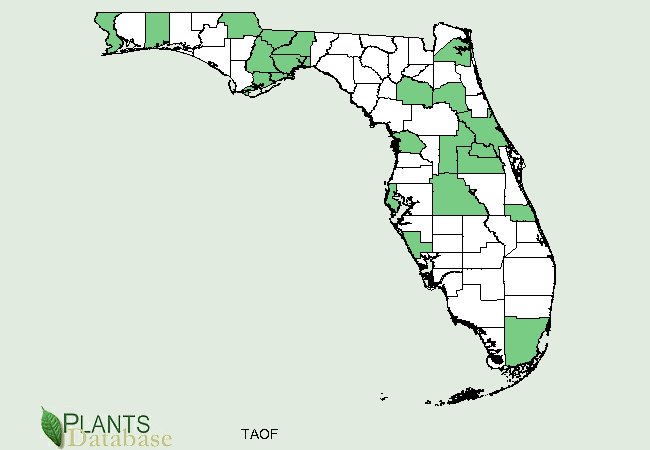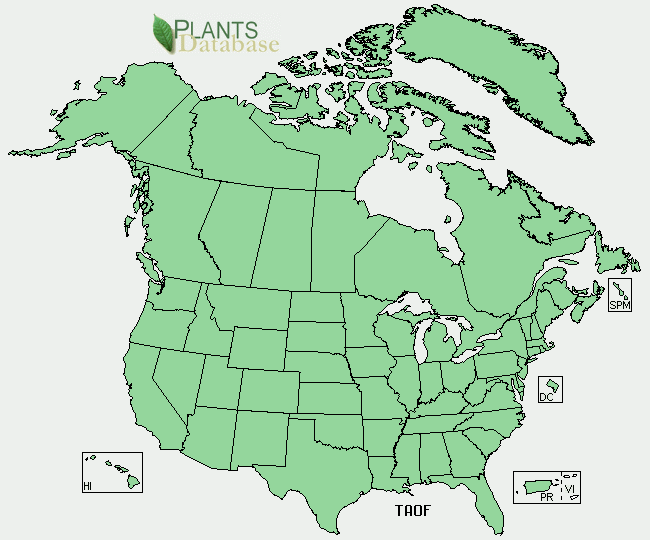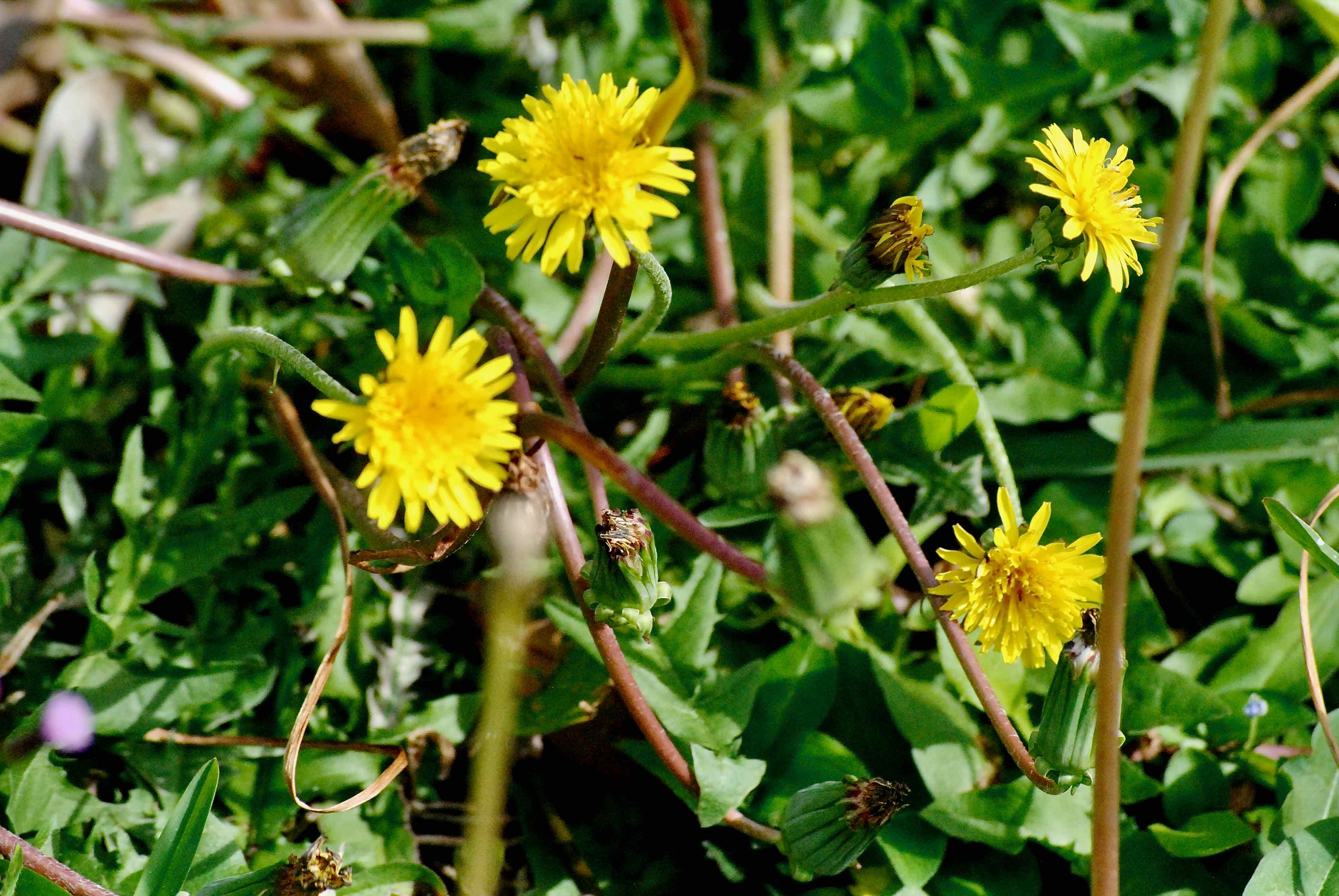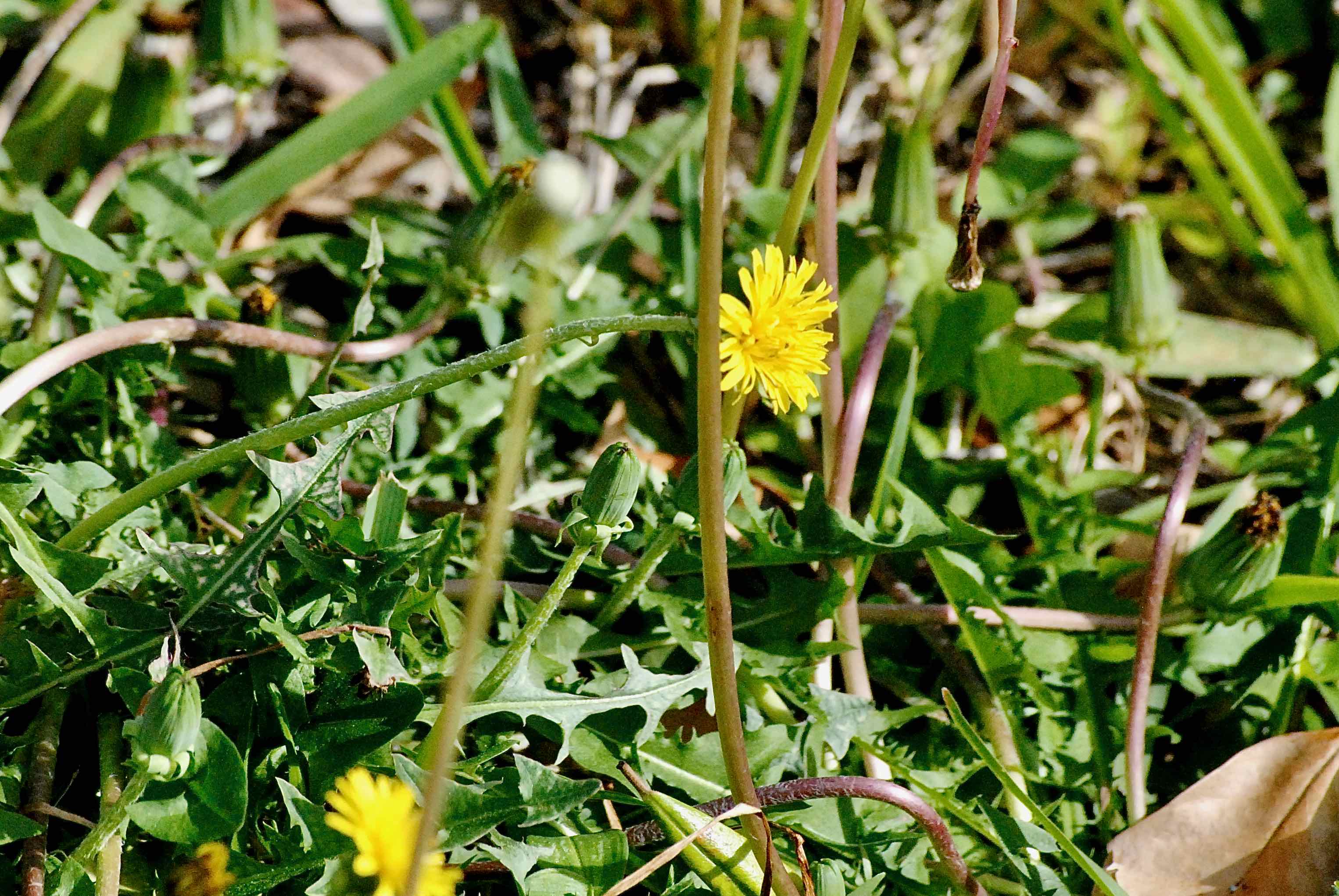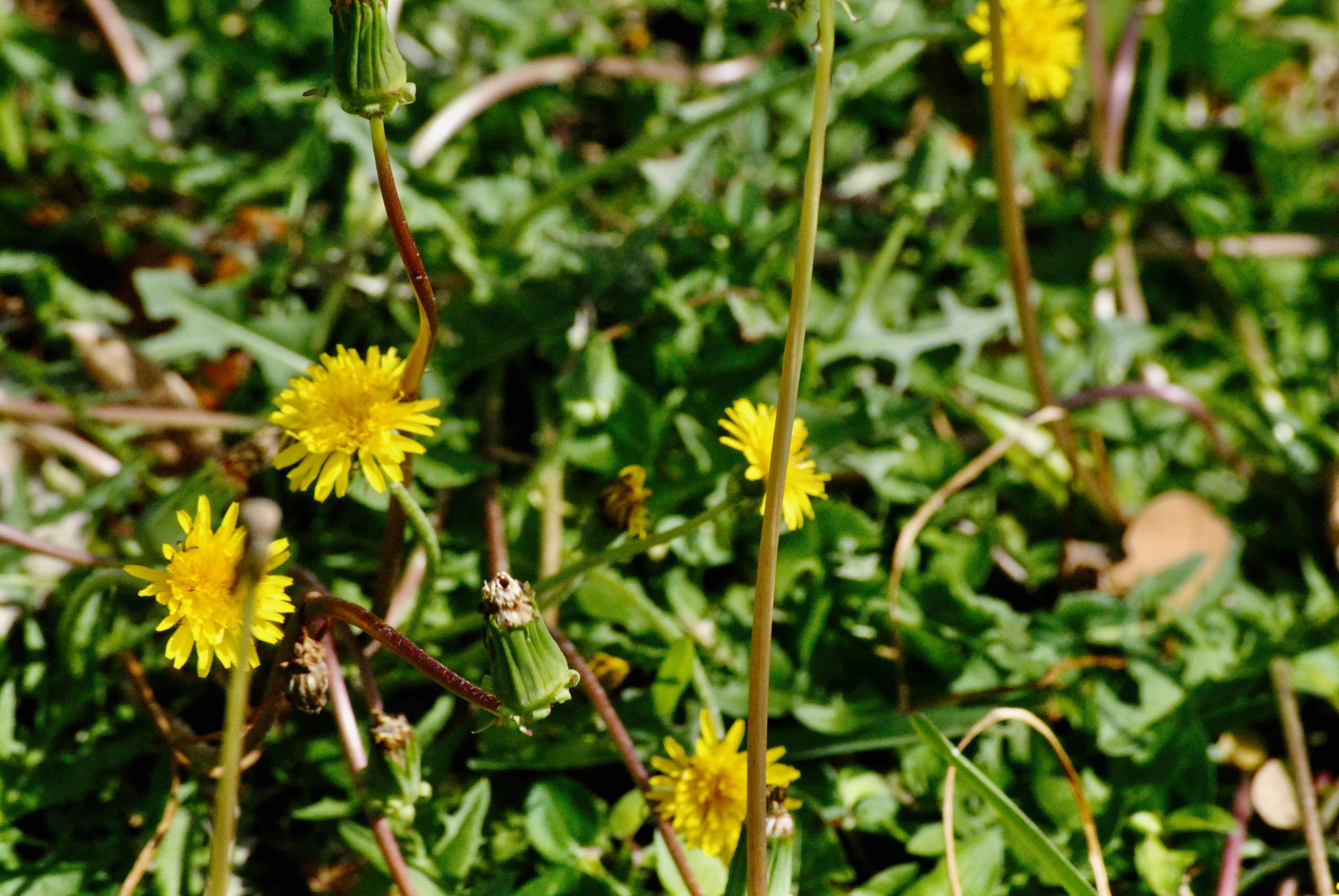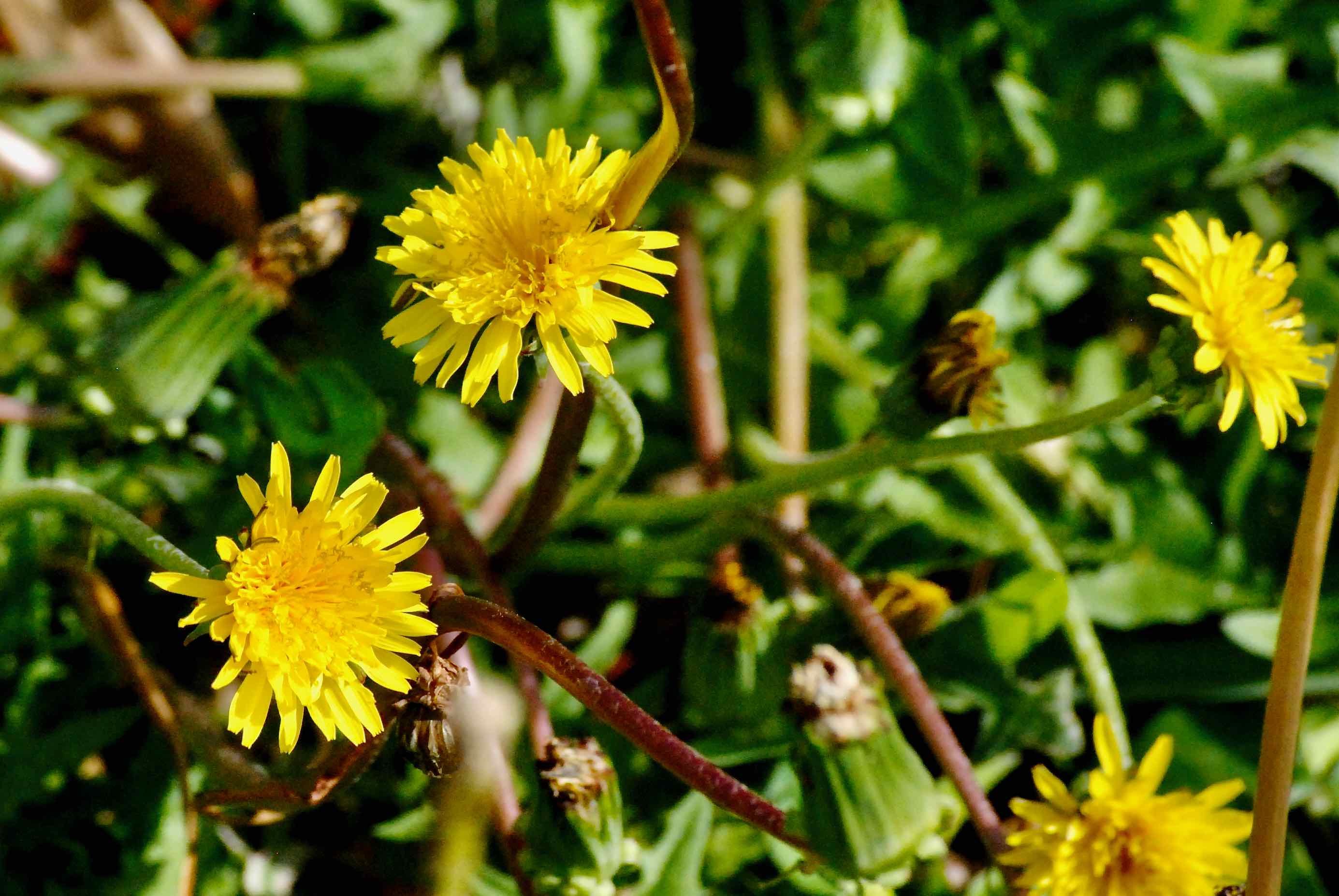
Dandelion, photographed along Military Trail in northwest Delray Beach, Palm Beach County, in February 2014.
For most, dandelion, Taraxacum officinale, is a pest. That's especially true If you live up north, and you have it growing in your lawn.
For a few, it's a cash crop and a culinary delight. Whatever you think of dandelion, it's one of the last plants you'd expect to find in South Florida. According to the U.S. Department of Agriculture, dandelion is only found in Miami-Dade County.
The Institute for Regional Conservation agrees. In fact, the only place it's catalogued dandelion's presence is Everglades National Park, of all places. But there it was, in a landscaped island at a gas station on Military Trail in Delray Beach. How it got there? Who knows? Most likely it hitchhiked a ride. Since then, we seen a few other times, always though in Palm Beach County. And always unexpected
Dandelion is found in all 50 states and in every province of Canada. It's also found in Mexico and the Caribbean. Flora of North America says it's native to North America, but most sources, including the USDA, say it's not. Dandelion isn't uncommon in Florida. Just in this part of Florida. It goes by a variety of names, including blowball, common dandelion and faceclock. But by far the best known and most widely used is dandelion. The name comes from the French, meaning lion's tooth, a reference to the shape of the leaves as shown in the photos below. They are long and sharply "toothed."
Dandelion is a native of Europe and Asia, and is considered an invasive in parts of the United States, though not in Florida, officially at least. There are a few plants that resemble dandelions, including Asiatic false hawksbeard, creeping oxeye and dwarf dandelion (distantly related) but only dandelion has a single flower atop a long, hollow stem.
The flowers are a bright yellow, about an inch in diameter, cheerful looking unless, of course, they're popping up in your yard. The flower eventually become a fluffy ball of seeds that are dispersed by the wind or anything else that might disturb it. Every part of dandelion is edible and full of good stuff like vitamins A, B, C, and D, iron, potassium, and zinc. The leaves are used as a chicory-like bitter green in salads or cooked. The flowers are used to make wine, the roots used in a coffee substitute.
The plant is said to have salutory effects on the urinary tract (which in part explains the origins of its scientific name — in Roman times (as opposed to Times Roman. Forgive the bad joke, please), it was sold in state-designated shops for medicinal use). Dandelion has been used in folk medicine as a diuretic to treat high blood pressure and liver problems. According to the University of Maryland Medical Center, there is no scientific studies confirming its effectiveness. On the other hand, it's been used to normalize blood sugar and lower chloresterol, and some preliminary studies have show some effectiveness in those uses. Some early work also show it to be effective as an anti-inflammatory agent.
It's believed that European settlers brought dandelion with them as a reminder of home and because of its usefulness as a food and medicine. From there it was a proverbial Pandora's box — it spread everywhere and could not to be stopped. Dandelion is grown commercially as a food crop in Florida, but a look at a few agricultural sources will turn up more references to it as a weed than as a vegetable.
Dandelion is a member of Asteraceae, the daisy and sunflower family.
Click on photo for larger image
U.S. Department of Agriculture Distribution Maps
